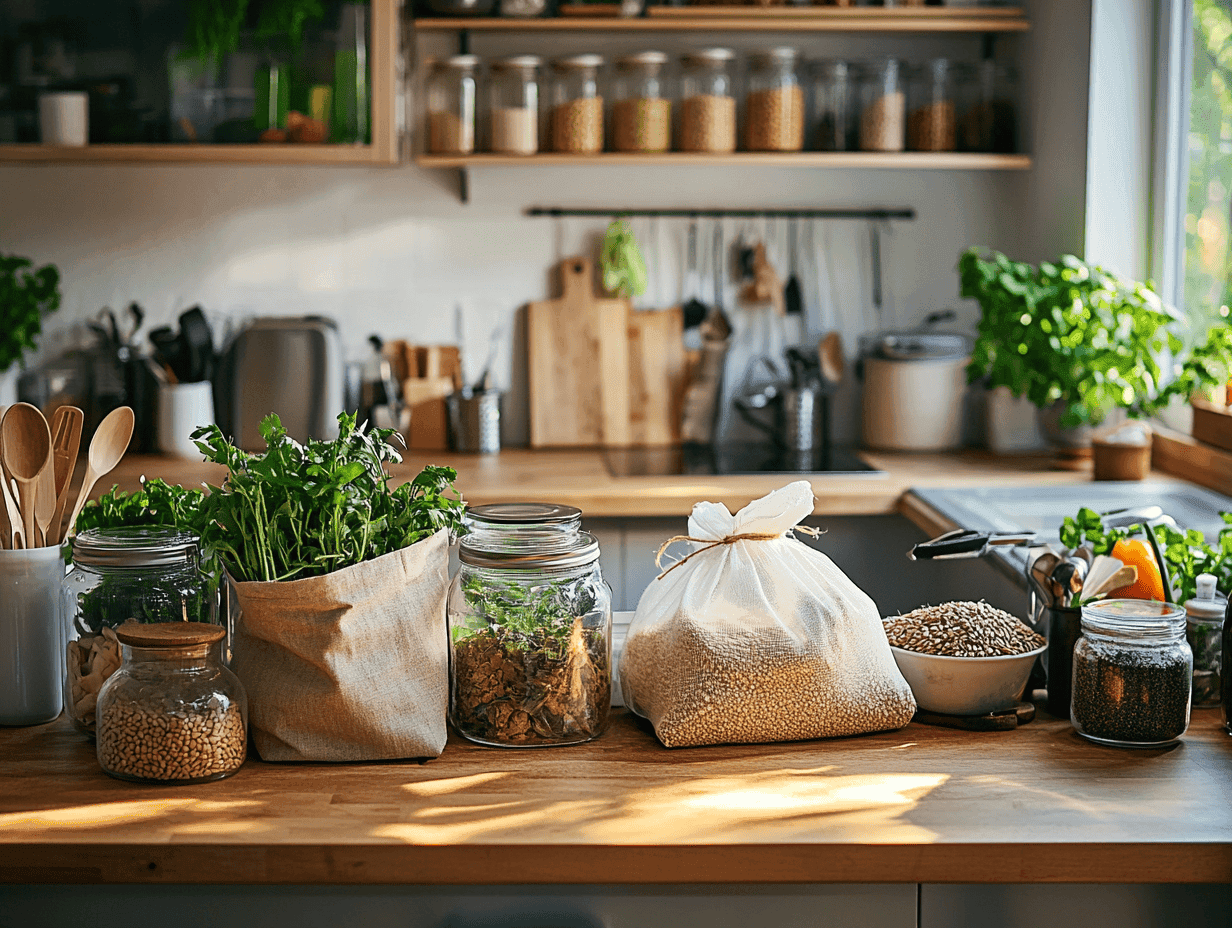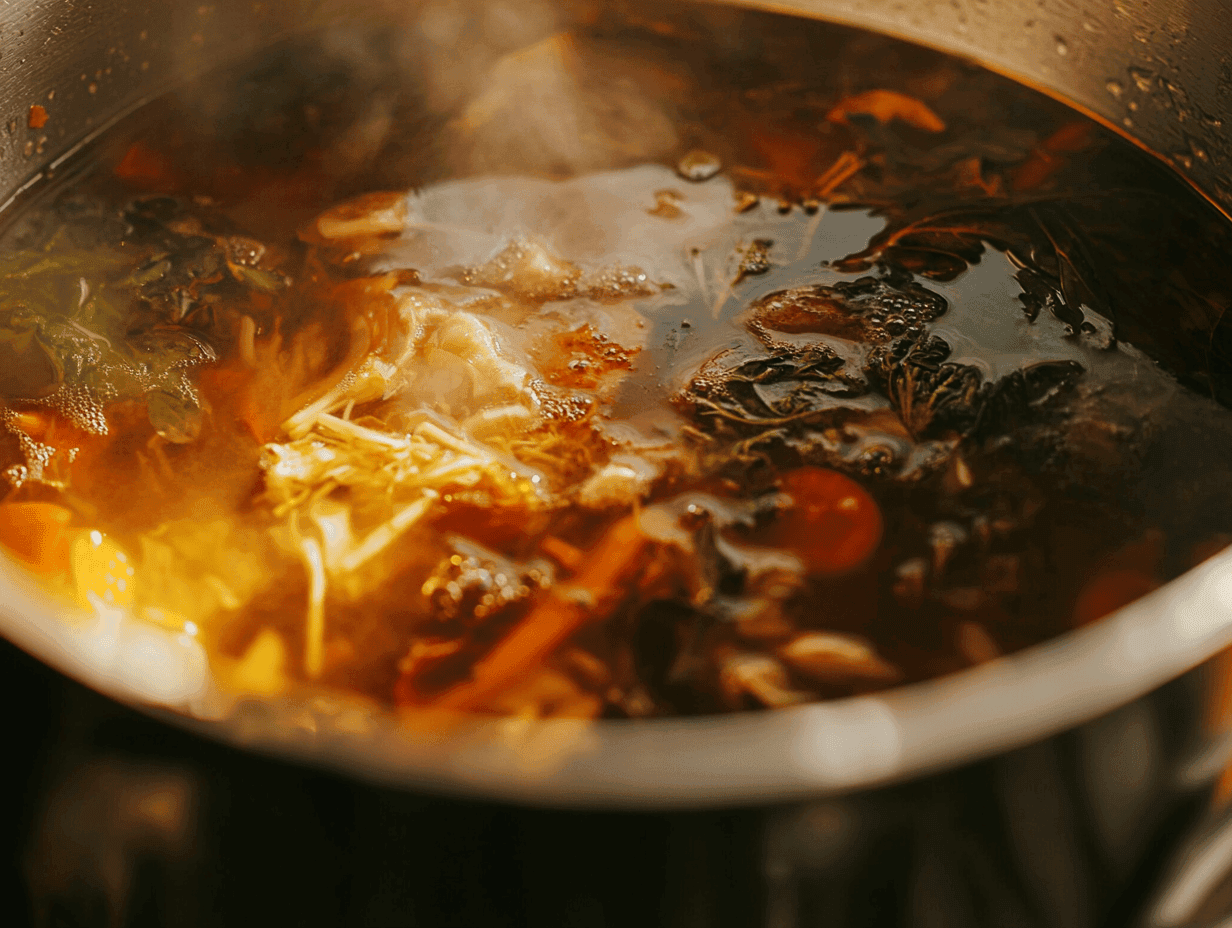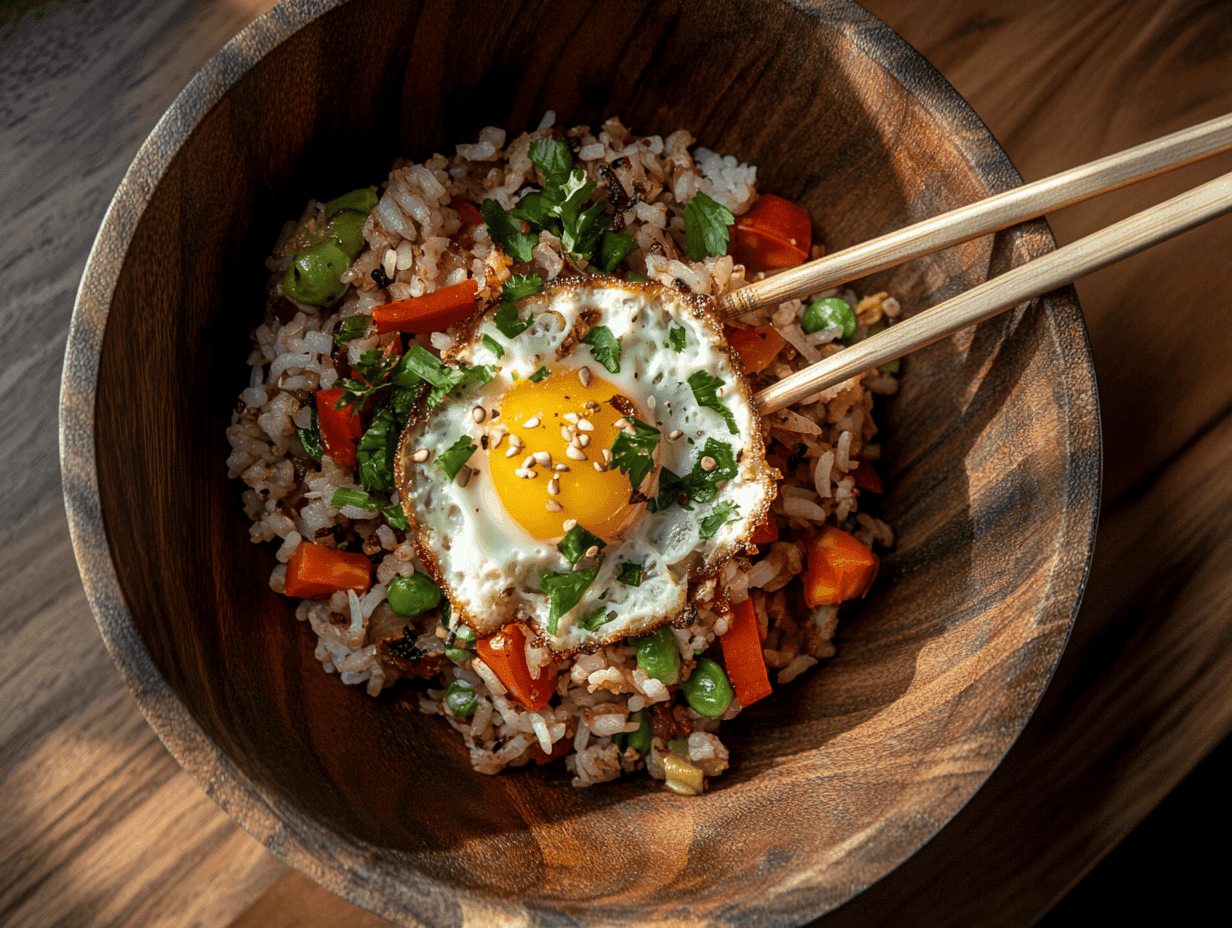Food waste is a growing problem worldwide, with millions of tons of edible food ending up in landfills every year. But what if we could turn food scraps, leftovers, and overlooked ingredients into delicious meals? That’s where zero waste recipes come in!
Zero waste cooking is all about reducing waste, using every part of an ingredient, and being mindful of how we store and consume food. Whether it’s repurposing vegetable scraps into a nutrient-rich broth, turning stale bread into crunchy croutons, or using overripe bananas for a tasty dessert, the possibilities are endless.
In This Article
Understanding Zero Waste Cooking
What Are Zero Waste Recipes?
Zero waste recipes focus on minimizing food waste by using every edible part of an ingredient. Instead of tossing vegetable peels, fruit skins, or stale bread, these recipes transform them into delicious and nutritious meals. This approach not only helps reduce waste but also saves money and promotes a sustainable lifestyle.
Think of it this way: when you eat an apple, do you throw away the peel? Many people do, but apple peels can be used to make tea, infused vinegar, or even baked chips. That’s the essence of zero waste cooking—using food to its full potential!
The Environmental Impact of Food Waste
Wasting food isn’t just bad for your wallet—it’s harmful to the planet. When food is discarded, all the resources used to grow, transport, and package it are wasted too. Even worse, rotting food in landfills produces methane, a greenhouse gas that contributes to climate change.
Did you know?
- One-third of all food produced globally is wasted.
- Food waste generates about 8–10% of global greenhouse gas emissions.
- The average household wastes around 30% of the food they buy.
By adopting zero waste cooking habits, you can help combat food waste, reduce your carbon footprint, and make a positive impact on the environment.
Benefits of a Zero Waste Kitchen
Embracing zero waste recipes goes beyond sustainability—it comes with a host of benefits:
✔ Saves Money – Using leftovers and scraps means fewer grocery trips and lower expenses.
✔ Encourages Creativity – It challenges you to get inventive with ingredients.
✔ Promotes Healthier Eating – Home-cooked meals made from scratch often have fewer preservatives and additives.
✔ Supports a Sustainable Lifestyle – Reducing food waste contributes to a greener planet.
Essential Principles of Zero Waste Cooking

Plan Your Meals to Reduce Waste
A little planning goes a long way when it comes to zero waste recipes. Before heading to the grocery store, make a meal plan and check what you already have in your fridge and pantry.
Pro tips for meal planning:
- Buy only what you need to avoid food spoilage.
- Plan meals that use overlapping ingredients. For example, if you buy fresh herbs for one dish, use the rest in another meal before they wilt.
- Set a “use-it-up” day each week where you cook meals using leftover ingredients.
Meal planning doesn’t just help cut down waste—it also saves money and time in the long run!
Utilizing Every Part of an Ingredient
A key principle of zero waste recipes is using every edible part of an ingredient, from root to stem. Instead of tossing vegetable peels, tops, or seeds, find creative ways to cook with them.
Here are a few examples:
- Broccoli stems – Slice them into thin strips and sauté for a crunchy side dish.
- Citrus peels – Use them to flavor teas, infuse vinegar, or make homemade cleaning solutions.
- Carrot tops – These are packed with nutrients and can be blended into pesto or chimichurri sauce. (Check out this Carrot Top Chimichurri Recipe for inspiration!)
By using food to its full potential, you get the most out of your groceries while cutting down on waste.
Smart Storage Techniques to Keep Food Fresh
Food spoiling before you can eat it? Proper storage can extend shelf life and reduce waste.
✔ Store herbs in water – Like flowers, fresh herbs last longer in a jar of water.
✔ Use airtight containers – Keep leftovers fresh and prevent food from absorbing fridge odors.
✔ Freeze ripe fruits and veggies – Overripe bananas, berries, and leafy greens can be frozen for smoothies or baking.
With the right storage techniques, you can make ingredients last longer and get the most out of your food purchases.
Top Zero Waste Recipes to Reduce Kitchen Waste

Homemade Vegetable Stock Using Scraps
One of the easiest ways to repurpose food scraps is by making a homemade vegetable stock. Instead of throwing away onion skins, carrot tops, and celery leaves, simmer them in water to create a flavorful broth.
How to make it:
- Collect vegetable scraps in a freezer bag until you have enough for a batch.
- Add them to a pot with water, garlic, and herbs.
- Simmer for 1–2 hours, then strain and store.
Use this homemade stock for soups, stews, or risottos—no waste, all flavor!
Zero Waste Banana Bread with Overripe Bananas
Got bananas that are too mushy to eat? Turn them into a delicious zero waste banana bread! Overripe bananas make baked goods extra sweet and moist, eliminating the need for excess sugar.
Bonus Tip: Freeze extra ripe bananas and use them later for baking or smoothies!
Crispy Potato Peel Chips
Next time you peel potatoes, don’t throw away the skins—turn them into crispy chips instead! Simply toss the peels with olive oil, salt, and spices, then bake until golden and crunchy.
This simple recipe is a fantastic way to reduce waste while enjoying a tasty snack.
Stale Bread French Toast and Croutons
If you’ve got stale bread sitting around, don’t toss it! There are so many ways to give it new life:
- French toast – Soak stale bread in a mixture of eggs, milk, and cinnamon, then fry it up for a delicious breakfast.
- Homemade croutons – Cube the bread, toss with olive oil and herbs, and bake until crispy.
Leaf-to-Root Cooking: Carrot Tops Pesto & Beet Greens Stir-Fry
Did you know that carrot tops and beet greens are 100% edible? Instead of discarding them, try these zero waste recipes:
- Carrot Top Pesto – Blend carrot greens with garlic, nuts, olive oil, and Parmesan for a delicious pasta sauce. (Here’s a great Carrot Top Chimichurri Recipe to try!)
- Beet Greens Stir-Fry – Sauté beet greens with garlic and olive oil for a nutritious side dish.
Zero Waste Cooking Hacks & Tips
Composting Food Scraps for a Circular Kitchen
Even with the best efforts, some food scraps are unavoidable. That’s where composting comes in! Instead of sending food waste to landfills, composting turns scraps into nutrient-rich soil.
What can you compost?
✔ Fruit and vegetable peels
✔ Coffee grounds and tea leaves
✔ Eggshells
✔ Stale bread (without dairy or oils)
What should you avoid?
✘ Meat and dairy (they attract pests)
✘ Oily foods
✘ Plastic or synthetic materials
Composting is an excellent way to complete the zero waste recipes cycle, giving back to the earth while keeping waste out of landfills.
Regrowing Vegetables from Kitchen Scraps
Did you know you can regrow veggies from leftovers? Instead of tossing scraps, you can turn them into fresh produce with minimal effort.
Try these easy regrowing hacks:
- Green onions – Place the white roots in a glass of water, and they’ll regrow within days.
- Lettuce and celery – Save the base and soak it in water until new leaves sprout.
- Potatoes – If your potatoes start sprouting, plant them in soil to grow a new batch!
This simple trick extends the life of your food and saves money. Plus, it’s a fun way to bring a little greenery into your kitchen!
Freezing & Preserving Food Before It Goes Bad
If you’re not sure when you’ll use an ingredient, freezing is one of the best ways to extend its shelf life.
Here’s how to freeze common foods properly:
- Herbs – Chop them up and freeze them in olive oil using an ice cube tray.
- Fruit – Slice overripe fruit and freeze it for smoothies or baking.
- Bread – Store bread in the freezer to keep it fresh for longer.
By freezing food before it spoils, you reduce waste and always have ingredients ready when you need them.
How to Turn Leftovers into Delicious Meals

Creative Ways to Repurpose Leftovers
Leftovers don’t have to be boring! With a little creativity, you can transform yesterday’s meal into something new and exciting.
Here are a few ideas:
- Leftover rice? Make fried rice with veggies and soy sauce.
- Roasted veggies? Blend them into a soup or pasta sauce.
- Cooked pasta? Toss it into a frittata or a cold pasta salad.
These small tweaks can turn leftovers into dishes that taste just as good—if not better—than the original meal.
One-Pot Leftover Soup Recipe
Soups are one of the easiest ways to use up extra ingredients. This one-pot leftover soup is fully customizable based on what’s in your fridge.
Ingredients:
✔ Any leftover cooked vegetables
✔ Leftover rice, pasta, or beans
✔ Homemade vegetable stock (from Part 3!)
✔ Garlic, herbs, and spices
Instructions:
- Sauté garlic in olive oil.
- Add leftover veggies and broth, then simmer.
- Toss in rice or pasta and season to taste.
It’s a great way to avoid food waste while making a comforting, hearty meal.
Zero Waste Fried Rice from Fridge Scraps
Got a mix of odd leftovers in your fridge? Fried rice is a perfect way to use them up. Simply toss cooked rice with vegetables, eggs, soy sauce, and any leftover protein for a quick and delicious meal.
Pro tip: Day-old rice works best, as it has a firmer texture and soaks up flavors better.
FAQs About Zero Waste Cooking
Many people are curious about zero waste recipes and how to adopt a more sustainable approach to cooking. Below are answers to some of the most commonly asked questions.
What Are Zero Waste Meals?
Zero waste meals are dishes prepared with minimal to no food waste. This means using every edible part of an ingredient, repurposing leftovers, and avoiding single-use packaging. The goal is to maximize resources while reducing what ends up in the trash.
Learn about sustainable cooking by checking out this Article, What Are Zero Waste Meals.
What Are the 5 Rules of Zero Waste?
Living a zero waste lifestyle isn’t just about cooking—it’s about making mindful choices in all aspects of daily life. The 5 R’s of Zero Waste are:
- Refuse – Say no to single-use plastics and unnecessary packaging.
- Reduce – Buy only what you need to prevent waste.
- Reuse – Find creative ways to repurpose items and leftovers.
- Recycle – Properly recycle materials when you can’t reuse them.
- Rot (Compost) – Compost food scraps instead of sending them to landfills.
By following these principles, you can significantly cut down on food waste and promote sustainability. Learn More.
What Is the Zero Waste Method?
The zero waste method is a mindset that encourages people to rethink how they consume and dispose of food. Instead of throwing things away, you find ways to reuse, repurpose, or compost them.
In the kitchen, this means:
✔ Using food scraps to make homemade broths
✔ Freezing fruits and veggies before they spoil
✔ Storing ingredients properly to extend freshness
This method helps reduce environmental impact while saving money on groceries. Learn More
What Is the Zero Waste Food Trend?
The zero waste food trend is a growing movement that focuses on reducing food waste through sustainable cooking practices. Many restaurants, home cooks, and even food brands are embracing this trend to minimize waste and promote ethical eating.
Some popular aspects of this trend include:
- Root-to-stem cooking (using all parts of vegetables)
- Upcycling food scraps into new recipes
- Buying in bulk to reduce packaging waste
With growing awareness of food waste’s impact, more people are looking for creative ways to enjoy delicious meals while being eco-friendly, Explore More.
Conclusion – Embracing Zero Waste Recipes
Cooking with a zero waste mindset isn’t just good for the planet—it’s good for your wallet and health, too. By planning meals, using food scraps creatively, and storing ingredients properly, you can cut down on waste while making flavorful dishes.
To recap, adopting zero waste recipes means:
✔ Using every part of an ingredient
✔ Repurposing leftovers into new meals
✔ Freezing, preserving, and composting to reduce waste
The best part? You don’t have to be perfect. Even small changes—like saving veggie scraps for broth or turning stale bread into croutons—make a big difference over time.
So why not start today? Open your fridge, see what you can use up, and get creative with your next meal!
Looking for more inspiration? Check out other delicious zero waste recipes for creative ways to reduce food waste while making tasty meals.

